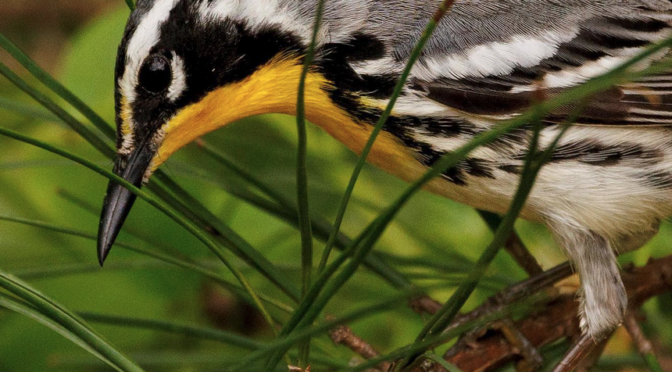I had an excellent time leading a birding photography tour this morning at Shiners Park in Lillington NC.
We spotted several species of birds including this gorgeous Yellow-throated Warbler.
Happily I was able provide my guests with some great close up photo opportunities in the field while dropping a bit of bird nerd photography knowledge along the way.
By the end of the trip, my guests came away with some terrific photos and I was relieved (lol!) that so many species made an appearance.
Speaking of photography knowledge, I got super lucky getting the photos seen below.
I’d been explaining how aperture works with the group and had set mine all the way to F/29 to demonstrate the concept of depth.
Then I promptly forgot all about resetting it back to F6.5 until I snapped off like 50 blurry shots in a row of this bird a few minutes later.
Luckily I somehow managed to keep my hand steady enough to accidentally get 5 useable photos on a handheld 600mm lens at 1/50th F29 lol!!






Definitely not optimal image results (too contrasty!) but I think it’s pretty funny that after over 20 years of shooting, I can still find ways to screw up a simple photo 😂
As seen in the next 2 pics, thankfully I figured out my mistake and was able to capture a few quality pics of this beauty snacking on ants in a pine.


Now the breeding season has begun, male Yellow-throated Warblers are out singing in full force, always in search of an interested female to pair up with.
Pairs are monogamous during the nesting season, and may produce two broods per year. The cup-shaped nest of weeds, grasses, and bark, built mostly by the female, is often located within a clump of Spanish moss or at the outer edge of a pine branch.
This warbler nests very high, in the tippy-top part of the tree canopy — 30 to 60 feet above ground, but sometimes as high as 120 feet!
Not at all surprising because even in the autumn, spotting at Yellow-throated Warbler always involves the words,
“Look up!”.
Photo by @sally_siko of @bestlife_birding on my mighty mirrorless monster, the @canonusa #R5






